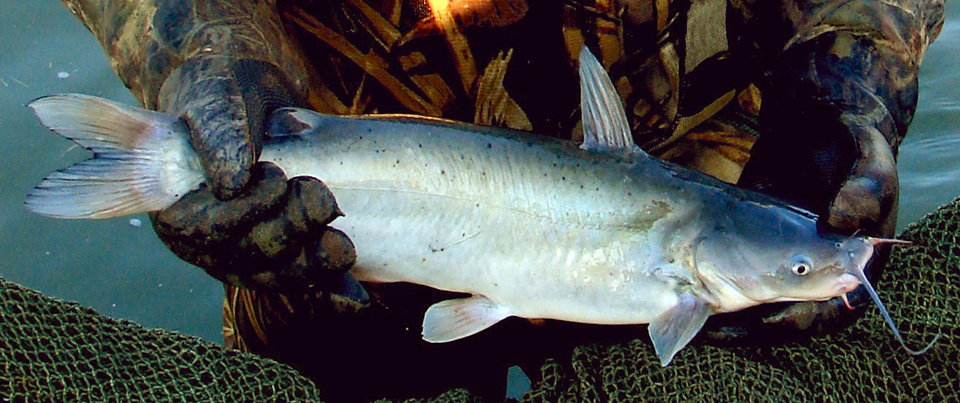- هذا الموضوع فارغ.
- الكاتبالمشاركات
- مارس 31, 2025 الساعة 7:41 ص #615349

Catfish farming is a critical component of the global aquaculture industry, with size being one of the most influential factors affecting growth rates and survival.
The size of catfish at various stages of development can significantly impact their health, development, and ability to thrive in different farming conditions.
This article examines how catfish size influences their growth and survival, the factors that affect size-related outcomes, and strategies for optimizing catfish farming practices to ensure healthy fish production.
1. The Relationship Between Catfish Size and Growth Rates
Catfish growth rates are heavily influenced by their size during different stages of development. Generally, smaller catfish experience faster growth rates when they are stocked in appropriate densities and given optimal feeding.
However, as they grow, the rate of growth tends to slow down, especially when larger fish face competition for resources such as food and space. Understanding the relationship between the initial size of catfish and their growth potential is critical for farmers who need to plan their harvest schedules.
Smaller catfish tend to grow faster in the early stages, but it is important to monitor their size and adjust feed and environmental conditions to ensure continued healthy growth as they mature.
2. Environmental Factors Influencing Growth Based on Size
Environmental conditions play a key role in determining the growth and survival of catfish, with water quality, temperature, and oxygen levels having a particularly strong impact on larger or smaller fish. Young catfish, which are smaller, are more sensitive to fluctuations in water quality, temperature, and oxygen levels compared to larger fish.
If these conditions are not optimized for their size, growth can be stunted or, in extreme cases, lead to death. As catfish grow, they become more resilient to minor environmental changes, but larger fish still require a more stable environment to thrive.
For this reason, proper monitoring and management of water conditions are essential for ensuring healthy growth and survival, especially when raising fish of different sizes in the same system.
3. Feeding Strategies and Catfish Size
Feeding strategies are crucial in determining the growth of catfish and ensuring that they reach their optimal size at harvest. Smaller catfish require more frequent feedings with higher protein content to support rapid growth. As catfish grow, the type and frequency of their feed may change, with larger fish requiring a different nutrient balance, often with less protein and more energy-rich ingredients.
If the feeding regime is not adjusted according to the size of the fish, growth rates can slow down, and survival rates may decrease due to malnutrition or competition among fish of different sizes. Ensuring that fish are fed appropriately for their size and growth stage is crucial for maximizing survival and minimizing stress, which can lead to health issues.
4. Size and Disease Resistance in Catfish
The size of catfish can also impact their resistance to disease, with smaller fish often being more vulnerable to pathogens than larger ones. Young, small catfish have underdeveloped immune systems, making them more susceptible to diseases, particularly in crowded or poor environmental conditions. As catfish grow, their immune systems strengthen, allowing them to better resist diseases and infections.
However, if farm conditions are not managed properly, large catfish can also become stressed, which can compromise their immune system and increase susceptibility to infections. Effective management of water quality, stocking densities, and biosecurity measures is essential to ensure that both smaller and larger catfish maintain good health and survive in aquaculture systems.
5. Harvest Timing and Size-Dependent Survival
Timing of harvest is a critical factor that influences both the growth and survival of catfish. Harvesting catfish at the right size ensures that they have reached their full growth potential while also minimizing the risk of disease and mortality associated with overstocking.
If catfish are harvested too early, they may not reach their ideal size, leading to lower market value and less efficient resource utilization.
On the other hand, waiting too long to harvest larger fish can lead to overcrowding and stress, which can cause injury, disease, and even death. Understanding the optimal harvest window for different sizes of catfish is essential for maintaining a balance between growth, survival, and profitability in the catfish farming industry.
In conclusion, catfish size plays a crucial role in determining growth rates and survival in aquaculture systems. Smaller catfish typically exhibit faster growth but are more vulnerable to environmental stressors, while larger catfish are more resilient but require more stable conditions to thrive.
Environmental factors, feeding strategies, and disease resistance all depend on the size of the catfish, and managing these variables effectively is essential for maximizing growth and ensuring survival.
By carefully monitoring and adjusting farming practices based on the size of the fish, catfish farmers can improve the efficiency and sustainability of their operations, ultimately contributing to a more productive and profitable industry.
Read Also: Catfish Sizing for Market Demand
- الكاتبالمشاركات
- يجب تسجيل الدخول للرد على هذا الموضوع.

